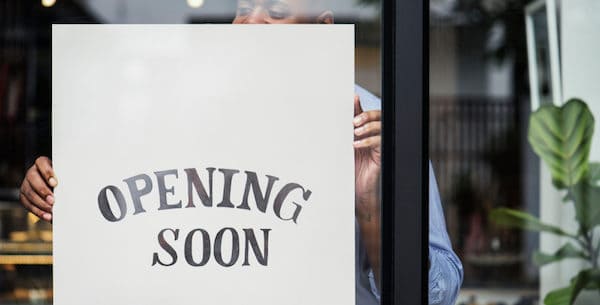After two months of working from home, many businesses are looking at re-opening their offices and employee cafeterias. Corporations and food service operators are developing comprehensive COVID plans to minimize employee exposure and maintain social distancing as much as possible. While these plans are commendable, the plans will only be effective if they are well integrated. If I were an associate working in one of the thousands of offices nationwide, I would be asking, “Is it safe to return to the café? What is my company doing to keep me safe?” After speaking with clients and food service providers throughout the country, we’ve created a short list of potential solutions that clients and their operators should be talking about in order to minimize COVID exposure in employee cafeterias.
- Pre-ordering and pre-payment: Now more than ever, ordering one’s food online or via their cell phone is a necessary feature for employee cafeterias. It is relatively easy to implement, increases sales, and reduces lines during peak times. In our COVID world, it also means masses of people won’t be queuing at the cash register to order. Minimal contact between cafeteria employees and customers will further reduce the risk of exposure.
- Self-serve kiosks: Another fairly standard feature seen in many cafeterias today, self-serve kiosks serve much the same purpose as pre-ordering. Increased sales, reduced lines at peak times and reduced contact between cafeteria employees and customers makes it an obvious choice. A hand sanitizer dispenser or sanitizing wipes placed nearby will help ensure the kiosk itself doesn’t become a hazard.
- Reservation times: Whether people will be sitting down to lunch in the cafeteria or taking it back to their desks, the cafeteria represents one of the most prominent dwelling areas in any office. The lunch rush often brings dozens or even hundreds in close proximity with each other. Reservation times to enter the café severely mitigates this risk. Ten- or fifteen-minute slots should be more than enough time to place an order and receive their food. For anybody looking to sit in the café, separate seating reservations may be required for longer dwell times. This measure will significantly help in “thinning out” the lunch rush.
- Anti-microbial keys: I personally think this is a must for everybody working in an office. Anti-microbial keys are typically made of brass because of its inherent antibacterial and antiviral properties. They will typically have touch-screen capabilities at one end so they can be used safely on shared screens for ordering at kiosk stations, mobile phones, or to sign credit card machines. Treat these like a second form of ID; all employees are required to have it on them at all times. Handed out to every employee upon their return to the office, these can effectively eliminate the need to touch germ-carrying surfaces in the café. You can check it out here: https://www.getkeysmart.com/products/cleankey
- Employee communication: It is not enough to institute one or all these measures without adequately explaining them to employees. People will undoubtedly be scared to return to their places of work; the best antidote for that fear is information. Introductory videos (imagine your on-boarding process) sent to employees the week before their return, “welcome back” gift baskets with the anti-microbial key and important guidelines for minimizing exposure, and large, conveniently placed signage throughout the building and cafeteria should all be under consideration.
- Phased menu development: The only thing we are certain of right now is that once businesses start to re-open, it will happen in phases. It makes sense to alter menu offerings and service style based on this approach. Obviously, during the initial re-opening period, grab and go and pre-packaged offerings will be a stronger choice as opposed to self-service buffets.
- Design: If a salad bar is the main focal point of your café, start talking with your food service partner about alternate uses for this real estate. Perhaps this space can become a holding area for pre-ordered lunches, maybe the café doesn’t open completely, but a table is set up at the front doors so that guests can come by and pick up their completed orders.
- Integrated health & wellness apps: Several companies make comprehensive health and wellness apps that can track and notify managers if employees display potential symptoms or fevers. Coupled with manual temperature checks at the beginning of every day, it can help food service managers determine who is able to work and interact with customers and who should be sent home. You can check out an example of this here: https://harri.com/.
This short list is just a few of the many possible solutions being considered by offices that are getting ready to open their doors in the coming weeks. The most important factor in reopening employee cafeterias is communication with your food service partner. Sharing ideas, potential best practices and logistical challenges with each other before service resumes will help minimize risks and foresee logistical challenges before they occur. The reopening of offices and food service programs may get off to a rocky start, but a concerted effort to implement meaningful changes by both parties will reflect in employee’s gradual willingness to eat at the café once again. It may not have the hustle and bustle it once did in the pre-COVID era, but it will remain an important amenity in office life nationwide.
For more information about how peer organizations are preparing to re-open their corporate cafeterias, use the link below to join JGL on May 18, 2020 at 1pm for “The Next Normal – Strategies for Re-Opening Your Café”. Space will be limited so sign up ASAP!
https://us02web.zoom.us/webinar/register/WN__nWulOswQdOD9_CxrBeALw

